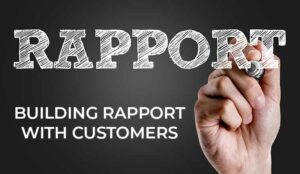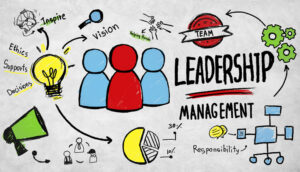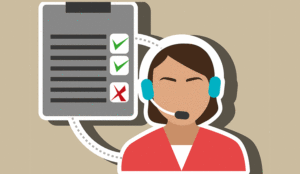OK, I’ll put my neck on the line here. The purpose of being in business is not to make profit.
The purpose of being in business is to create and keep customers.
In this article, Carolyn Blunt looks at how we should treat different customer groups in different ways.
Many organisations are focused on creating customers but not always focused enough on keeping them.
What good are clever sales processes when customers are being chewed up and spat out of the other end of the pipeline, never to return?
Knowing your customer is key to making them feel special and individual. This creates loyalty and is so important in retaining that customer.
When was the last time you made a significant purchase?
What happened? Why did you buy that item from that company? Chances are there was either:
- A good deal available or a limit on availability (scarcity)
- It came recommended or endorsed by someone you know, like or trust (social proof)
- You liked the company or person you were buying from (liking)
- There was something easy, convenient or that you received in return for the transaction (reciprocation)
Which of the above apply to your customers when they buy your products or services?
Are your agents recognising what the buying factors are and applying the emphasis to the right areas?
Segmenting customers
For example, an organisation we work with sells a very specialist service to 9,000 customers, but these 9,000 customers are very diverse. They are different ages, professions, backgrounds and personalities.
Without conducting a full personality profile on 9,000 people, we were able to categorise some types of customers.
Customers who demand respect
There are those who demand respect and expect their status and expertise to be acknowledged by call centre agents. There are those that are down to earth and are very friendly and expect a personal chat with the call centre agent.
When these customers ring in they have been known to say ‘Hi ,it’s Bob’ because they are so informal and feel like the call centre agent will instantly ‘know’ them from that brief introduction!
Young dynamic customers
Then there are the young, dynamic customers, highly literate with technology and social media who want a fast, electronic service. Agents must never patronise their technical knowledge, e.g. ‘we now have an app you can download, do you know what an app is?’
This customer group are unlikely to respond to letters by ‘snail mail’ and are always on the go, working hard and probably partying hard too. From doing some analysis like this and then training agents to be able to ‘spot’ customer types and flex their style to meet their needs, every single one of the 9,000 customers feels like they are getting a truly personal service.
The training sessions exploring the ‘dos’ and ‘don’ts’ with different customer types can be lively, fun sessions but with a very enlightening approach for agents.
One size does not fit all
Whilst we have for years expressed desires for ‘consistent service’ and to ‘treat every customer like you would like to be treated’ this is now no longer enough.
We need to treat every customer like the individual they are and give them the service that they desire. In the event that we don’t know what that is, then it is okay to ask the customer.
Whilst we need to be realistic, ‘what would be the best thing I could do for you now, Mrs Blunt?’ would be music to my ears in many customer service situations, what we find when we ask that question is that often we have anticipated that the answer will be very complex or expensive.
Getting the customer’s name right
However, it is often something simple, cheap or even free! ‘An apology and that you get my name right on future correspondence’ would be my usual response!
It is difficult for me to be able to apply the buying factor of ‘liking’ to an organisation that gets my name wrong at every point of contact.
I’m unlikely to recommend them to a friend or family member and create ‘social proof’, which is one of the cheapest, fastest ways to create and keep customers, hence the many ‘recommend a friend’ reward schemes for customers.
Seeing things from the customer’s point of view
In order to treat customers like individuals it is a useful skill for agents to be able to see things from the customer’s point of view. To really understand what it is like in their world.
The ‘crushed customer’
A travel company produced a fabulous training video for their staff which showed a customer at home, a single mother working and saving up hard to take her nine-year-old son on a summer holiday so that they could spend quality time together and her son could do some swimming and snorkelling in an environment more salubrious than their local leisure centre.
When the customer contacts the travel company she is feeling excited and dreamy, but this is quickly quashed by the bored employee who asks run-of-the mill questions and is wholly uninspiring and uninterested.
The film depicts the crushed customer feeling lost, hurt and confused, before taking the employee on a ‘scrooge’ like fly-on-the-wall tour of her wrongdoings. She is able to ring the customer back the next day and start afresh.
She connects with the needs of the excited young boy, finds them the perfect holiday and achieves immense job satisfaction.
The whole training video lasts no more than 6 minutes but leaves people feeling quite emotional.
Getting emotionally involved
Emotion is a very powerful factor in engaging your agents to be motivated enough to stop and think when delivering not just customer service, but a customer experience. Getting them closer to real-life customers, whether through video, focus groups or just photo profiles, can be extremely helpful in bringing to life the full picture.

Carolyn Blunt
We also need to recognise the value of the work our agents do and remind them that with every call they are totally and utterly MAD…Making A Difference.
Carolyn Blunt is passionate about customer service and is a contact centre training expert with Real Results Training. If you enjoyed this article you might also like our free resources. Please visit www.real-results.co.uk and see the Members Area. For more information on training for your organisation call 0161 408 2003.
Other articles in this series:
A is for Assertiveness
B is for Boss
Do you have any more ideas, hints or tips on this subject? Please share your thoughts in an email to Call Centre Helper.
Author: Jonty Pearce
Published On: 28th Sep 2011 - Last modified: 15th Aug 2025
Read more about - Customer Service Strategy, Carolyn Blunt, Customer Experience (CX), Customer Management, Customer Satisfaction (CSAT), Retention, Service Strategy











































Hi, great article but I would suggest that the purpose of business is to make profit BY creating and keeping customers, they aren’t mutually exclusive they are in fact intrinsically linked.